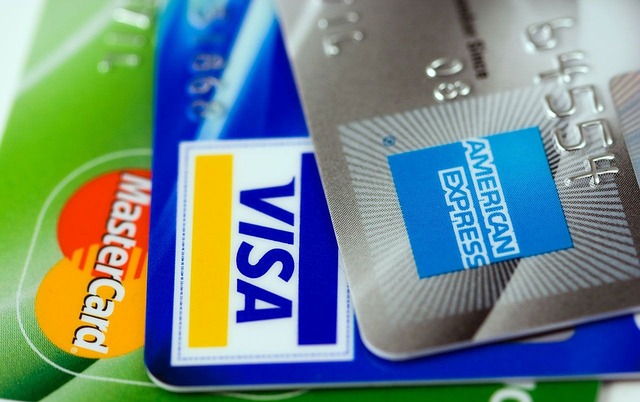Have you ever faced a broken appliance that needed immediate replacement, or felt the financial strain of December’s holiday shopping? These “surprise” expenses aren’t really surprises at all – they’re predictable parts of life that need a plan. Enter sinking funds: a simple but powerful saving approach that’s helped millions avoid debt and financial stress. Whether you’re saving for home repairs, holiday gifts, or your next car, this complete guide will show you how to prepare for life’s planned expenses with confidence!
What Is a Sinking Fund?
As a personal finance enthusiast for over 10 years, I’ve seen how much confusion exists around sinking funds. Let me break it down in simple terms: a sinking fund is a savings account where you regularly set aside money for a specific future expense. Think of it as a special piggy bank for grown-ups!
- Unlike emergency funds which cover unexpected costs, sinking funds are for planned expenses you know are coming.
- The term “sinking fund” comes from the business world, where companies save money to pay off future debts.
- You can have multiple sinking funds for different expenses – I currently have four different ones!
- The key is consistent, regular contributions to reach your savings goal by your target date.
Why You Need Sinking Funds
I’ve learned through years of budgeting that relying solely on emergency funds or credit cards for predictable expenses is a recipe for financial stress. Here’s why sinking funds are essential:
- They prevent you from dipping into your emergency fund for non-emergencies.
- You avoid credit card debt and interest charges for planned expenses.
- Reduce financial stress by breaking large expenses into manageable monthly contributions.
- Create a more accurate monthly budget by accounting for irregular expenses.
- Build better spending habits through intentional saving and planning.
Essential Sinking Fund Categories
Over the years, I’ve experimented with various sinking fund categories. Here are the ones that have proven most valuable for me:
Home Maintenance and Repairs

Last year, our first-floor HVAC unit needed replacement, but thanks to our home maintenance sinking fund, we had the $12,000 ready to go! Since the unit was nearly 25 years old and we had replaced the second-floor unit a few years earlier, we knew it was just a matter of time. That’s why we started contributing aggressively to the home maintenance sinking fund well in advance.
How much should I contribute to this sinking fund? A good rule of thumb is to save 1-2% of your home’s value annually for repairs and maintenance. However, if you know you have a major expense coming up (like replacing an HVAC system), consider increasing your monthly contributions accordingly. Here’s a list of common expenses you’ll likely encounter:
- Annual HVAC maintenance and repairs
- Appliance replacement costs
- Roof repairs and replacement
- Plumbing and electrical work
- Seasonal maintenance tasks
Vehicle Expenses
Vehicle expenses can be particularly challenging because they often come in waves. One month you might need new tires that cost $800, and the next month your annual insurance premium of $1,200 is due. But with proper planning, these expenses don’t have to derail your budget.
How much should you save for vehicle expenses? Here’s a practical breakdown:
- Regular maintenance: Set aside $50-100 monthly for oil changes, filters, and routine services.
- Tires: Save $100-200 quarterly for eventual tire replacement (typically every 50,000 miles).
- Insurance premiums: Calculate your annual premium and divide by 12 for monthly contributions. Insurance premiums typically increase annually, so save at least 3% on top of the prior year’s premium.
- Registration and taxes: Check your state’s fees and divide by 12.
- Major repairs: According to Kelly Blue Book, the average vehicle repair cost is nearly $550. For older vehicles with high mileage, consider increasing your contributions by 2-3 times annually for repairs.
- Future vehicle down payment or purchase price: If you plan to replace your car in the next 3-5 years, calculate the desired down payment or cash price and divide by the number of months until purchase.
Holiday and Gift Expenses
The average American spends over $900 on Christmas gifts alone! And that doesn’t include other holiday expenses like decorations, food, and travel. Here’s how to break down your holiday and gift sinking fund:
- Christmas: Start in January by dividing your total anticipated costs by 12.
- Birthdays: List out all birthdays and calculate average gift amounts.
- Special occasions: Include weddings, baby showers, graduations, and anniversaries.
- Holiday decorations: Factor in seasonal decor, entertaining costs, and special meals.
- Holiday travel: Include transportation, lodging, and extra expenses.
Pro tip: Keep a gift spreadsheet tracking annual occasions and typical spending. Add 10% to your calculations for price increases.
Travel and Vacation Fund

The average cost of a one-week vacation in the U.S. is $1,984 for a single person and $3,969 for a couple, with costs increasing by approximately $1,000 per additional person. Planning ahead for these trips helps avoid post-trip credit card debt. Here’s how to plan your vacation sinking fund:
- Transportation: Flights, rental cars, or gas for road trips.
- Accommodations: Hotels, vacation rentals, or camping fees.
- Activities: Excursions, attractions, and entertainment.
- Food and dining: Both special meals and everyday food costs.
- Emergency buffer: Add 15% for unexpected expenses or opportunities.
Calculate your total vacation budget, then divide by the months until your trip. Consider seasonal price variations and book early for better rates.
Pro tip: While saving in your vacation sinking fund, use a travel rewards credit card for your regular monthly expenses. You can defray the travel cost by using points and miles for flights and accommodations. Many cards offer welcome bonuses worth $500+ in points when you meet minimum spending requirements. Don’t forget to pay off the balance in full each month.
How to Set Up Your Sinking Funds
Here’s a step-by-step guide to establishing your sinking funds:
1. Identify Your Categories
Make a list of all expected future expenses. Common categories include:
- Home maintenance and repairs
- Vehicle expenses
- Holiday gifts
- Annual subscriptions
- Travel and vacations
- Insurance premiums
- Property taxes
2. Calculate Required Savings
For each category:
- Determine the total amount needed.
- Set your target date.
- Divide the total by months until target.
- Add a 10% buffer for unexpected increases.
3. Choose Where to Keep Your Funds
- High-yield savings account (best for larger sums).
- Traditional savings account (good for quick access).
- Money market account (higher interest rates).
4. Set Up Automatic Transfers
- Schedule transfers on paydays or at the beginning/end of the month.
- Use direct deposit splitting if available.
- Set calendar reminders to verify transfers.
Best Tools for Managing Sinking Funds
The key to successful sinking funds is having a reliable system to track and manage them. Consider using:
- Dedicated savings accounts: Look for banks offering multiple sub-accounts or “bucket” features. I personally use Wealthfront for their competitive interest rates and simple-to- use categories feature.
- Digital tools: Many banks now offer built-in tracking features.
- Simple spreadsheets: Track contributions and progress towards goals.
Pro tip: Most banks allow you to nickname your accounts. Label each sinking fund clearly (e.g., “Property Tax Fund” or “New Car Fund”) to avoid confusion and maintain organization.
Frequently Asked Questions
Q: What’s the difference between a sinking fund and an emergency fund? A sinking fund is for planned expenses (like car repairs or Christmas gifts), while an emergency fund covers unexpected costs (like job loss or medical emergencies). You should have both.
Q: Where should I keep my sinking funds? High-yield savings accounts are ideal. Look for banks offering sub-accounts or categories to separate different funds.
Q: How many sinking funds should I have? Start with 2-3 essential categories (like home maintenance, vehicle expenses, and holidays). Add more as needed based on your specific expenses and goals.
Q: What if I can’t contribute the full recommended amount? Start with what you can afford. Some savings is better than none. Increase contributions gradually as your budget allows.
Q: Should I prioritize sinking funds over debt repayment? While maintaining basic sinking funds is important, prioritize paying off high-interest debt first.
Key Takeaways
- Sinking funds help prevent debt by planning for predictable expenses.
- Start with essential categories and expand based on your needs.
- Calculate monthly contributions by dividing total expected costs by months until needed.
- Keep funds in separate accounts to stay organized and avoid accidental spending.
- Regular review and adjustment of contribution amounts ensure you stay on track.
- Consider inflation and price increases when planning future expenses.
- Use automation to maintain consistent contributions.
Remember: The goal of sinking funds isn’t to restrict your spending but to provide peace of mind when expected expenses arise.

Subscribe for More Insights: Want more tips on building wealth, maximizing your money, and reaching your financial goals? Join my free weekly newsletter for actionable advice and exclusive strategies delivered straight to your inbox. Subscribe now and take control of your financial future!
Have questions about setting up your own sinking funds? Drop them in the comments below – I’d love to help you get started on your journey to financial peace of mind!
Phillip founded Hacking Your Finances after reaching financial independence in 2024 and leaving his corporate career to follow his passion for helping others optimize their finances. Combining his love for personal finance and travel hacking with years of professional expertise, he provides practical strategies to help readers maximize credit card rewards and achieve their financial goals.



